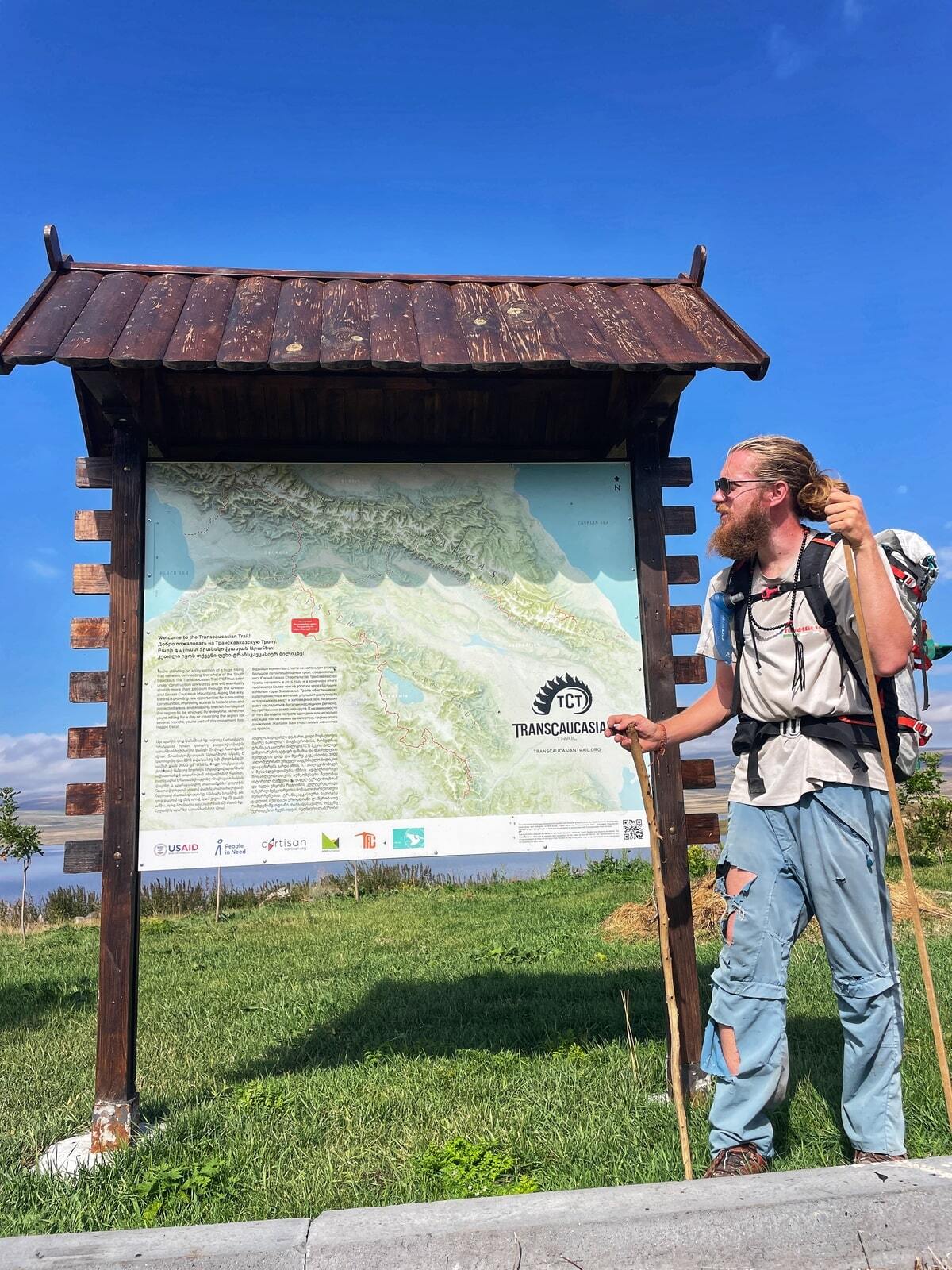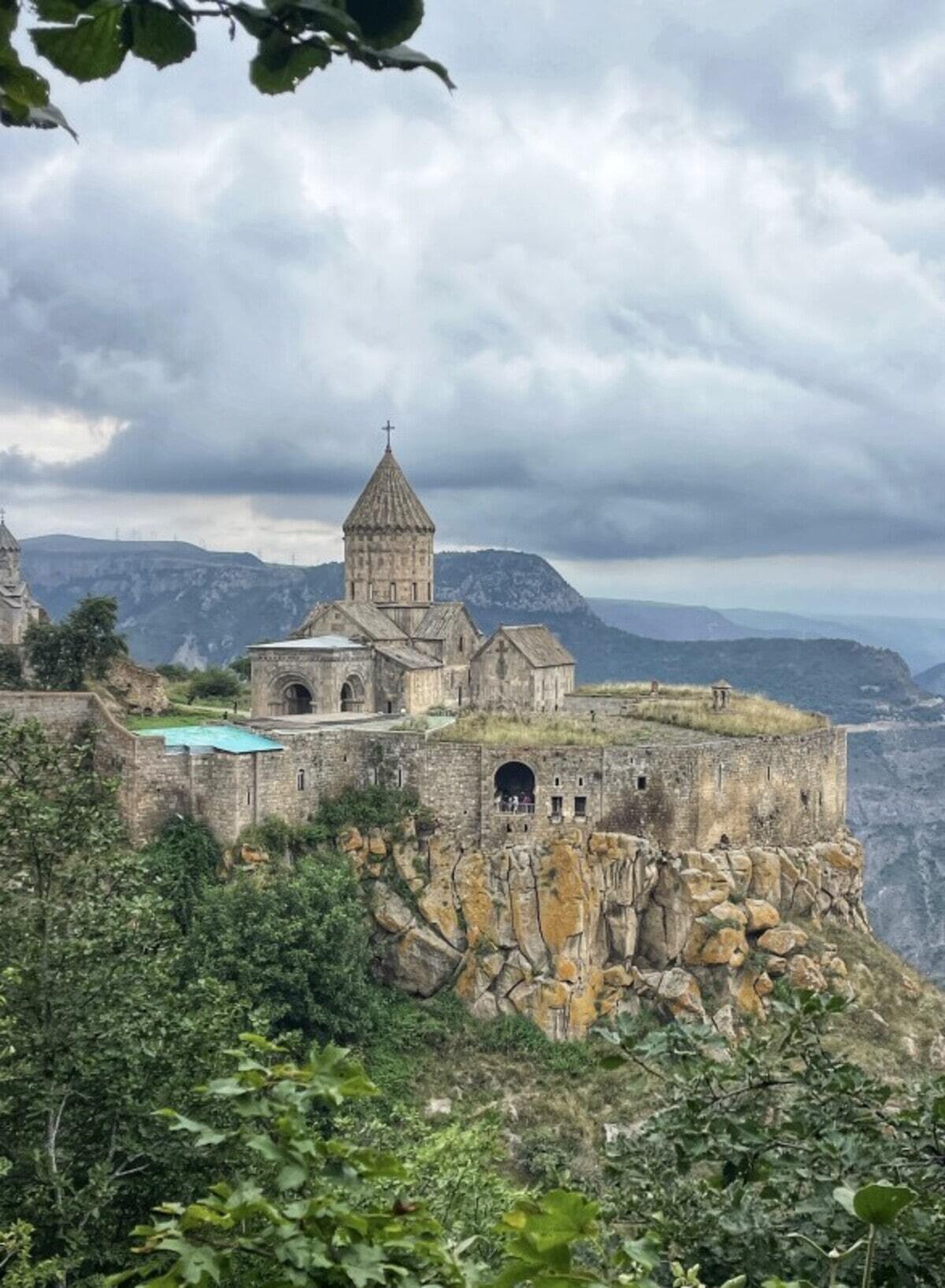
THE TRANSCAUCASIAN TRAIL
For the first time since I left for the World Tour on Foot, I was seriously considering parking Ezio and loading a backpack on my shoulders. I had gone on a few treks between Latin America and Australia, but the longer routes had never lasted more than a week. This time, however, it would take at least a month to cover the eight hundred-odd kilometers from Meghri, the southern border with Iran, to Lake Arpi, the northwestern corner of Armenia nestled between Turkey and Georgia. The locals call that region “Armenian Siberia” because in winter the air is cool and temperatures hover around minus thirty degrees (one year a -42 was recorded). I had stumbled upon the data while doing some research and it had stuck in my mind, who knows why.
It didn't take long to make the decision. I had been walking for four years pushing a stroller and I wanted to change, to trade the asphalt road for a mountain trail and forty kilos of comfort for essential equipment. Why take the simplest route when you can complicate things? In reality it was a matter of expanding my comfort zone and sticking my nose into a category that Diogenes would have been proud of, ultralight. Since this time I would have had to carry everything on my back, de-grammarizing the setup seemed like a good and right idea. I contacted Silvia from the Ferrino marketing team and proposed the solution: between tent, mattress and sleeping bag I would save almost two kilos. The three-season, single-person, free-standing Nemesi series tent would house me and the contents of the 65 liters of the Istinct backpack, a lightweight and waterproof dyneema projectile.
The trek has a name, TransCaucasianTrail, and an ambition, to connect the states south of the Caucasus: Armenia, Georgia and Azerbaijan. The idea was born in 2017 and with covid in the middle the route was still in development. The information available on the site was abundant, especially for the Armenian part, and there was even a gpx track and the draft of a guide; but the work on the trail was barely begun and the difficulties it presented, if on the one hand would have made the journey slow and tortuous, had kept mass tourism away. Summer 2024 was a good compromise to enjoy the adventure.
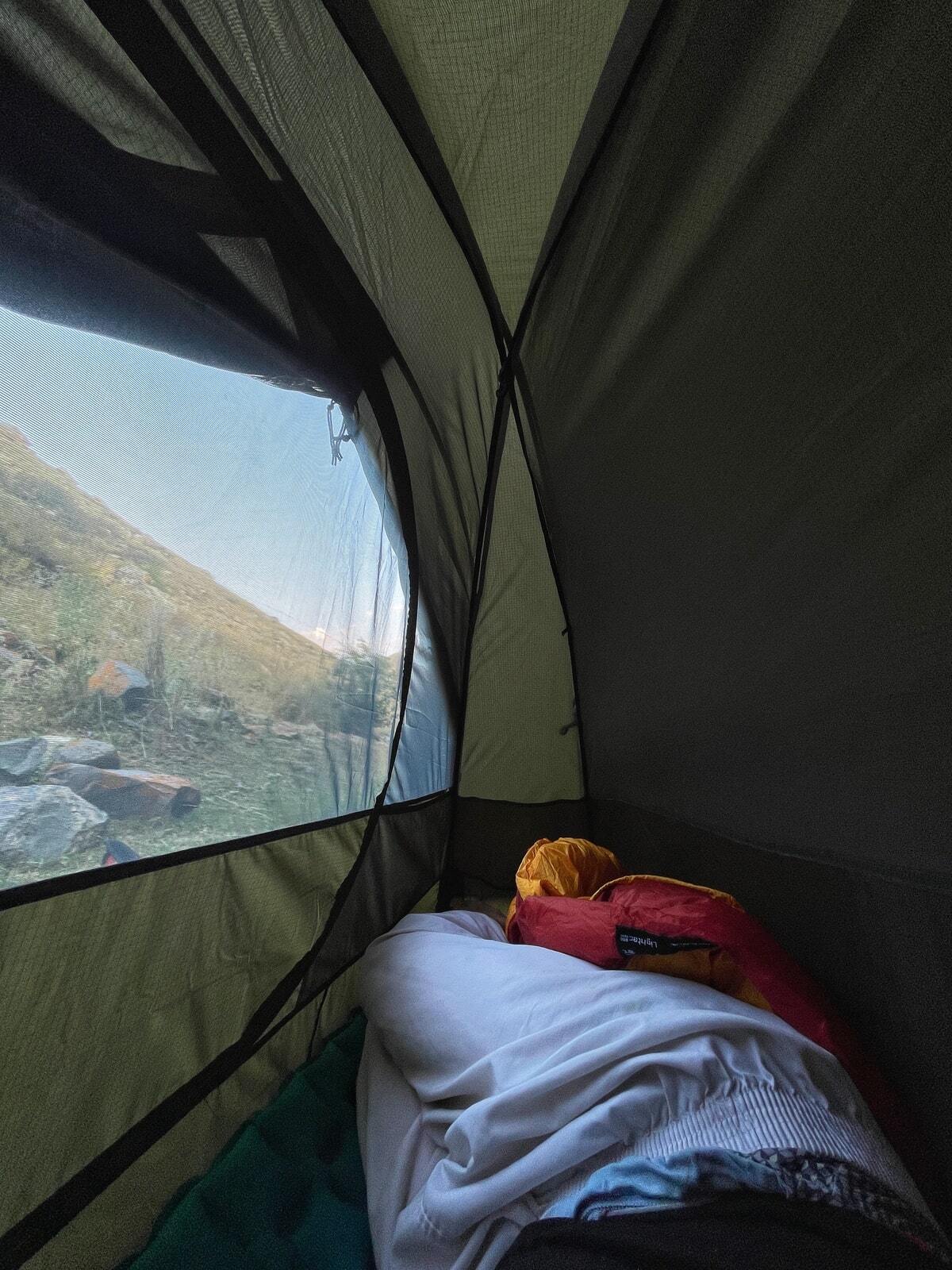
FIRST DAYS ON THE TRAIL
I set out in early August from Meghri, the southernmost tip of the TCT. The town and its few thousand inhabitants are the standard size of an Armenian town. “Meghri,” in the local language, has to do with honey or sweet things, it must be because an inordinate amount of grapes, figs and apricots grow in the area. Every family has a field planted with vines and fruit trees, something is eaten but the real reason is that the Soviet passion for alcohol remained even after the dissolution of the USSR, so every self-respecting family has its own production of colorless sixty-proof liquors that they call vodka and bring out at every excuse. The spirits are more similar to our grappa than to real vodka, they should be drunk from ten in the morning onwards and always all in one gulp. Strange to say, they don’t leave any hangovers. Strange to say, refusing them is impossible.
The first days on the trail are the most difficult (the reasons are complementary to the intake of local vodkas) and lead to reconsidering the decisions made, cursing the spirit of initiative that promotes novelties. Sooner or later the body will get used to the rhythm, it is just a matter of giving it time to acclimatize and sweat the proverbial seven shirts. Too bad that for reasons of space the wardrobe has been reduced to just one. To hikers who start from the south, the trail gives a warm welcome: literally, with forty-odd degrees and painful climbs of slopes exposed to the sun, and metaphorically with embraces of brambles, invasive branches that do not respect personal space, collapsed trees and flowers that burn the skin. Someone has even managed to spot bears, but they are not part of the welcoming committee and you are not always so lucky.
A singular fact about Armenia is that mountains occupy eighty-six percent of its surface (more than Switzerland and Nepal) with half the country above two thousand meters. This morphological characteristic brings practically no advantage in terms of temperature. In summer you die of heat and in winter the mountains remember what they are supposed to do, so you freeze. On the other hand, there is no way to escape the climbs that take your breath away and the descents that break your knees. The first starts from Meghri, inside the village, not even time to warm up the muscles and you go up from six hundred meters (incidentally one of the lowest points of the entire route) to two thousand two hundred. The third stage is even worse: starting from the thousand seven hundred meters of Shishkert, a place for which it takes a certain amount of poetic license to call it a town, and arriving at the 3200 of Mount Khustup; and this only for the morning. I arrived below the rocky ridge with my tongue hanging out and a shameful number of pauses. I had abused the oxygen available to ask myself how the hell I had managed to move on the Andes between four and five thousand meters, just three years before. There was a merciless answer printed before my eyes and I could not decide whether it was the disarming truth or a trick of fatigue: was it possible that I had aged suddenly?
With the summit in sight, the sky decided I had seen enough and closed in on itself with a stubborn lump of grey clouds. I reached the base, a clearing complete with a man-height Iron Cross and Armenian and Army flags. I dumped my backpack on the ground with the gentleness one can use on occasions like this and rummaged through it with determination. Since I had saved almost two kilos of gear, I had the brilliant idea of evening the score with the same number of kilos of grappa. Seven flasks of four different flavours should have guaranteed a sufficient supply for the first two weeks, but the prospect of taking weight off my shoulders and celebrating each stage with a just reward quickly got the better of the best of strategies. I sipped plum cordial in front of an improvised bonfire and gradually, along with the colour on my cheeks, the hope returned that I could make it without collapsing to the ground.
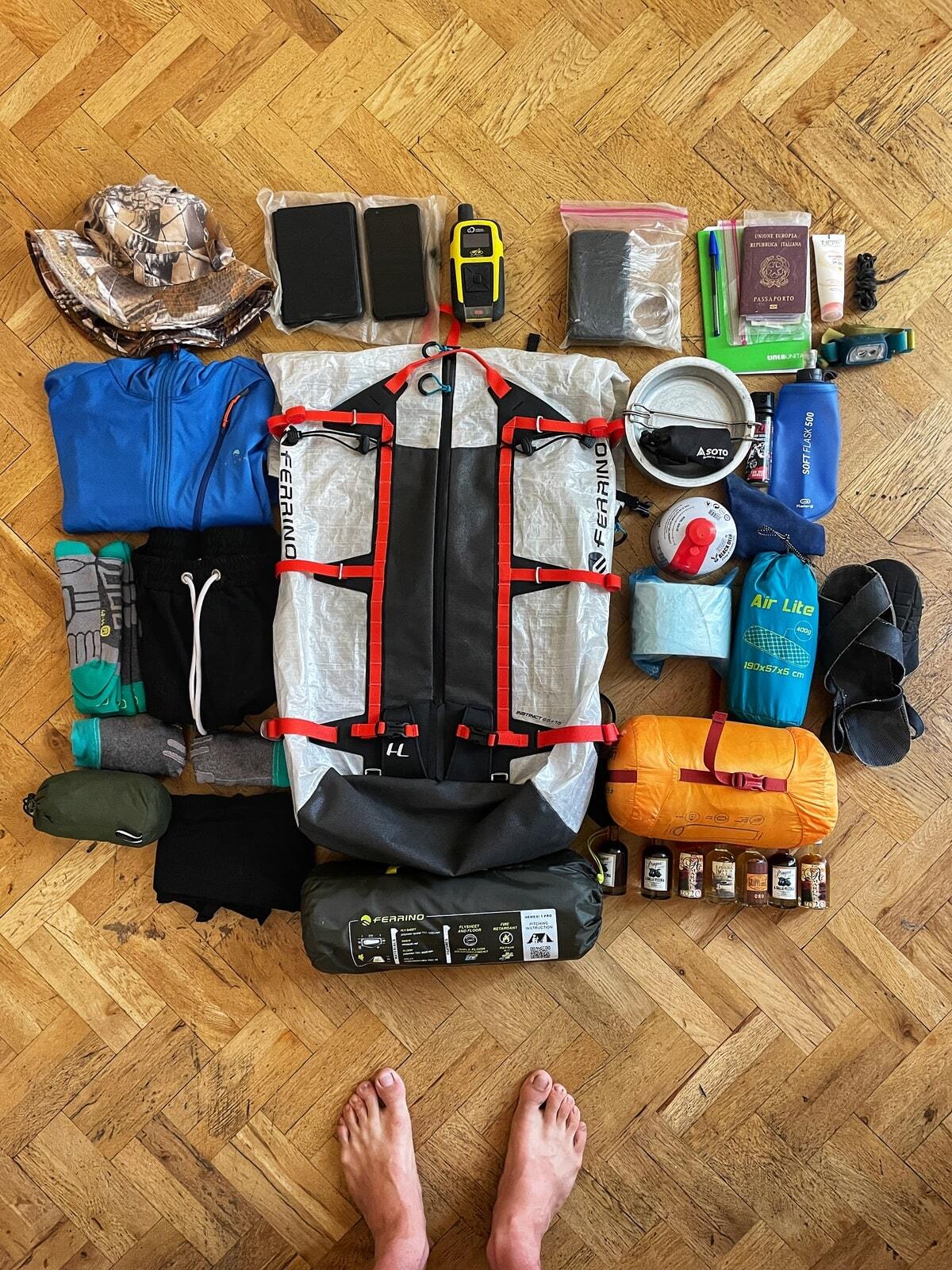
ANCIENT MONASTERIES
Within a week the body got used to the loads (the grappa had also disappeared) and the fatigue was replaced by the pure pleasure of walking. After the failed summit of Mount Khustup came the first gems of the journey: the Shaki waterfalls and the monasteries of Tatev and Noravank, both a step away from being declared UNESCO World Heritage Sites. Armenia has an impressive amount of religious sites and in the abundance of mountains mentioned above, churches and monastic complexes have taken over particularly scenic locations. Noravank was built at the bottom of a gorge of fiery red rocks while Tatev is located on the edge of a cliff some five hundred meters above the river that flows downstream. Some go there by car, a few on foot, but most arrive by cable car, enjoying a spectacular flight over the abyss below the cable car.
It really makes you wonder how the monks chose such inaccessible places to build their homes - and how much sweat it cost to build them. The fact is that these areas were the crossroads of impressive migratory movements, especially from the East; almost all of the Silk Roads passed through here. Every now and then, in addition to the spice caravans, someone with more warlike than commercial intentions would arrive, like the Mongols or the Huns, who in tormented fits of nostalgia for the plains from which they had set out, would set to work and restructure the landscape by razing everything they found in their path. Fleeing armies on horseback is a great effort, especially if you don't see them arriving in time. So the idea of building a monastery in an area that is difficult to access, which, in a place where there are only mountains, generally means as high as possible, has the double advantage of staying alive and enjoying a good view when you look out the window.
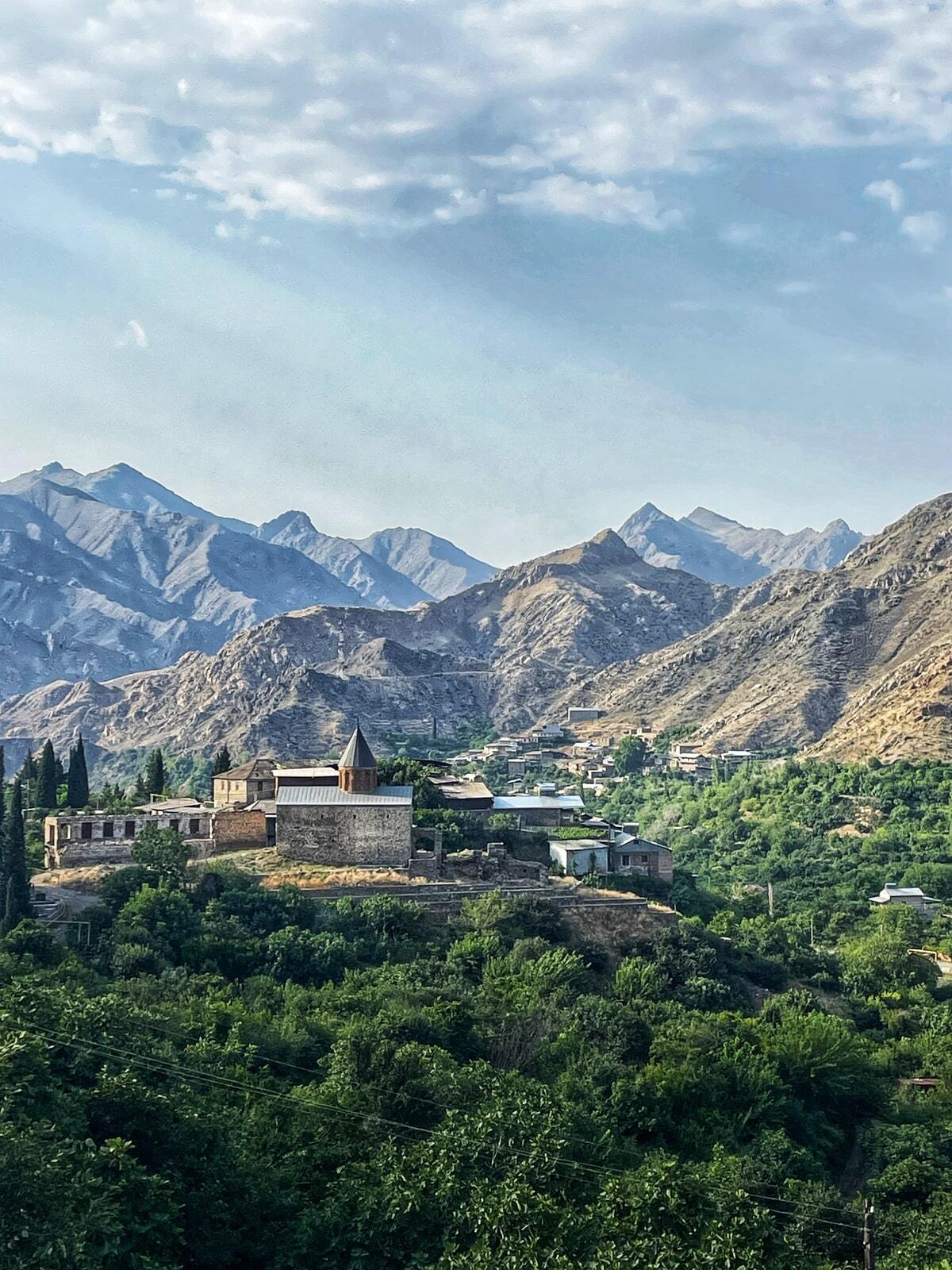
GEGHAMA MOUNTAINS AND YAZIDIS
Monasteries and homemade vodkas are recurring features of a trip to Armenia, but by moving away from urban civilization you can experience another, small world unknown to passport stamp tourism. I was halfway through the route, among the gentle grassy reliefs of the Geghama Mountains, an area composed of various volcanic edifices that cuts the country from south to north. No inhabited centers, no supply points for food and no trees for making firewood, however given the presence of bears and wolves, lighting a bonfire to grill some meat could have been a counterproductive activity. However, since the volcano and I were going in the same direction, we decided to keep each other company for a few days.
The guide's rough descriptions spoke of two dangers to watch out for: electrical storms and sheepdogs. It was with these seventy-kilo white giants that the Yazidis entered the scene, a semi-nomadic population originally from northern Iraq who have been raising and herding animals in the Armenian mountains for generations. Approaching the flocks of goats, sheep and cows is extremely risky because the dogs attack even if you keep a hundred meters away. The wisest move was to take long detours, staying away from the camps, but at a certain point curiosity got the better of them.
Thanks to the whistle built into a strap on my backpack, I announced my presence well in advance. A human figure emerged from one of the tents and called the mastiffs with a sharp, decisive cry. I gradually approached the camp, with more caution than a nighttime trip out of the tent to go to the bathroom. A pair of women approached me, who could have been mother and daughter, robust bodies and enormous, red hands, black hair wrapped in a handkerchief, a long dress that ended in a pair of rubber boots. Greetings do not involve physical contact, maybe there can be a handshake when men are around but nothing more. How to communicate? I don't like Google Translate, it numbs the brain. I prefer to make do with my hands and a dose of intuition, some story always pops out.
It almost always starts from banal geographical notions that, however, on second thought, suggest some of the most profound ontological questions of the human being: where do you come from, where are you headed, are you alone? The shepherd family climbs up the high mountain pastures every spring, at the end of September they will descend into the valley and head north. With punctual frequency, even if not daily, a terribly rickety and courageous van climbs up unlikely off-road tracks with the aim of collecting the milk that the cows produce; they are paid in cash and so the family participates in the company and stocks up for the following year, when they will return to isolate themselves and bring with them enough food for several months. The milk is stored at night in tanks of about twenty liters, near the stream, where the air is cooler.
I am invited to enter with broad and unmistakable gestures. The tent must be similar to a Mongolian yurt, even though I have never seen one personally. A circular perimeter, numbered wooden panels make up the vertical walls, outside animal skins, inside iron beds, a wood stove, a gas cylinder for cooking, a table, chairs, a bench, general utensils and clouds of flies due to the nearby presence of large animals. The floor is of course dirt. In the tent next door, the laboratory: a bathtub, rather dirty to tell the truth, is used to curdle the cheese. Blue plastic buckets collect the stages of the various fermentations. A kilo of goat cheese costs the equivalent of five euros. Only cash, obviously. I buy it hoping that once eaten it won't wobble too much, I think about the hygienic conditions in which I have eaten in the last few weeks and I conclude that I have an excellent chance of keeping the cheese in my stomach. Once out of the lab tent we went back to the house tent for some unfiltered coffee and some sweets. I opened my backpack and put some dried fruit on the table with the intention of leaving it there. Instead it was politely rejected and landed back in its custody. These people know how difficult it is to live in the mountains and would never take food from a stranger, under any conditions.
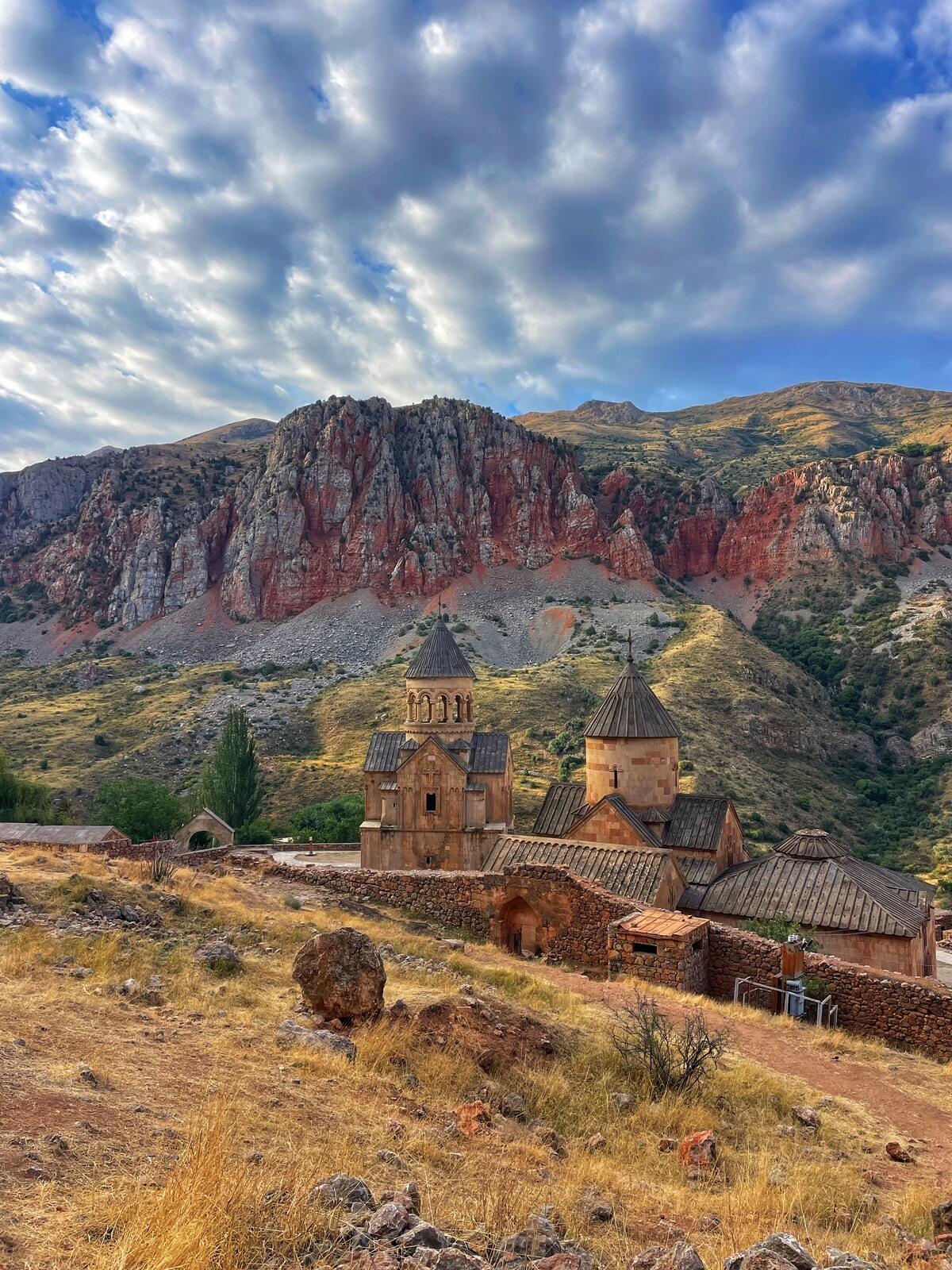
TRAIL END - IT'S ALWAYS TOO SHORT
I left the Geghama to gradually descend towards Lake Sevan, the largest body of water in the country. A little further north are the National Park and the city of Dilijan, where one of the founders of the TCT has opened and runs a hostel, the Dilijan Hikers Hostel. I took the opportunity to throw myself and my clothes into the first washing machine since I had left, three weeks earlier, and to gorge on fried potatoes and ojaxuli, a stew washed down with local wine. Dilijan would be the last place where I would seriously stock up on food and even though I had sent myself parcels of supplies via the postal service, I took the opportunity to replenish my supplies. Lake Arpi was about ten days away and the 65 liters of my backpack, extendable with an additional 15, allowed for considerable autonomy.
North of green Dilijan, valleys and hills alternate seamlessly, culminating in the Debed canyon, a terrifying chasm on whose summits orderly rows of roaring tractors spent their days combing fields of wheat. At irregular intervals, the usual stone monasteries appeared with their dizzying views, almost always populated by wedding or baptism celebrations: faith in Armenia is alive and one can feel how God, in this part of the world, has not yet been declared dead.
The TCT walk came to an end after 820 km and thirty-two days, in an anonymous ranger headquarters of a National Park. It took a few tries to convince them to let me pass beyond the gate. I pointed to the sign with the trail end and the map of the route, then I formed a rectangle with my fingers and repeatedly bent the index finger of my right hand, miming the action of the camera. They let me pass. I picked up the photo, said goodbye, and with an empty backpack and eyes full of wonder I set off towards the nearby border with Georgia, the next chapter of this walk. It was time to reunite with Ezio and update him on the month of adventures that had just ended. I thought, Maybe I'll read these words to him as we head towards Tbilisi. I also have another piece of news to tell him, a big thing that has kept me busy in the last few days: I want to announce that in a year we'll be returning home.
